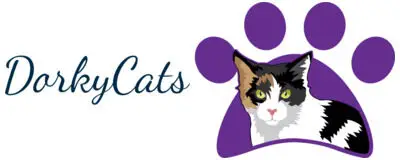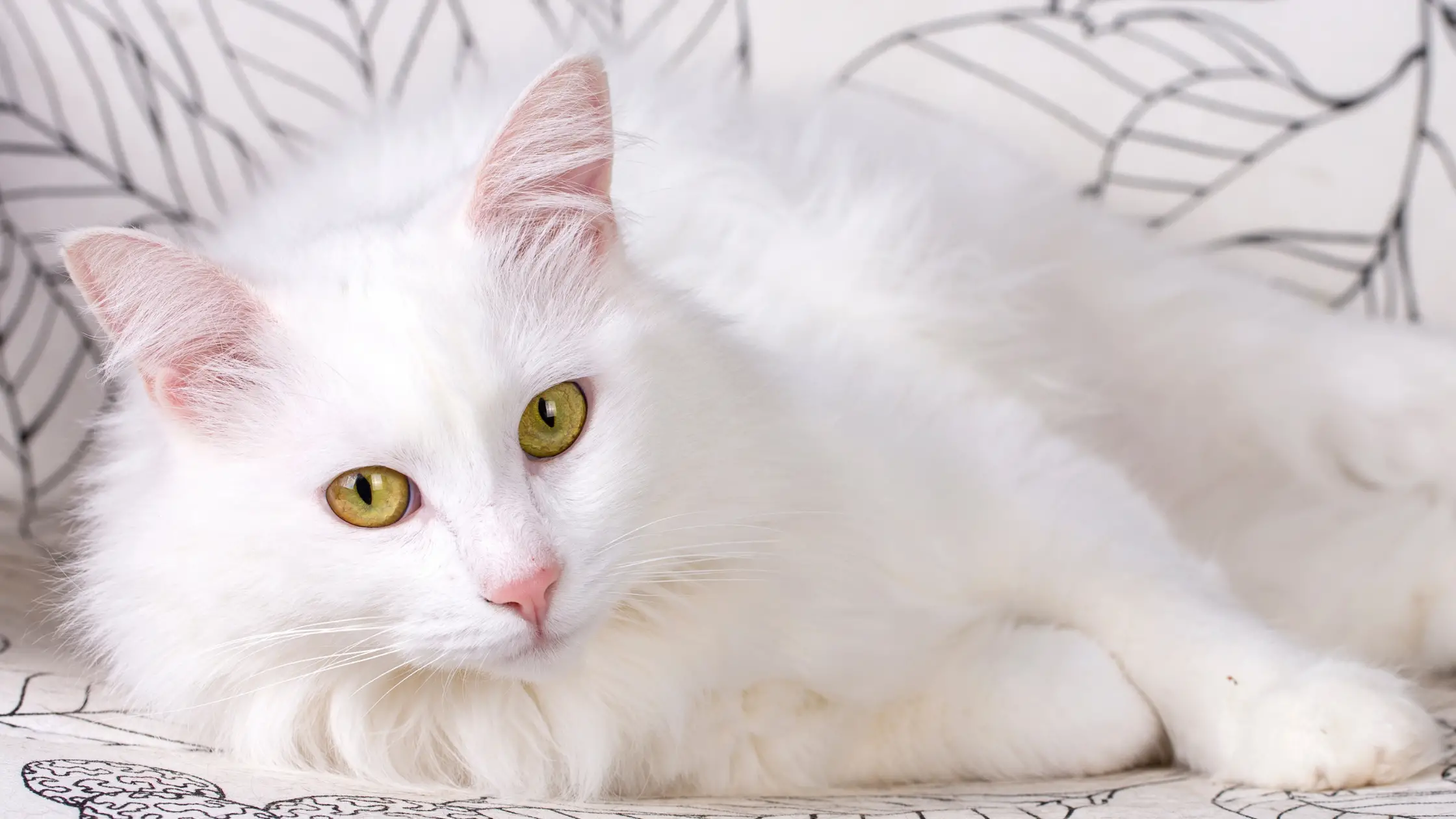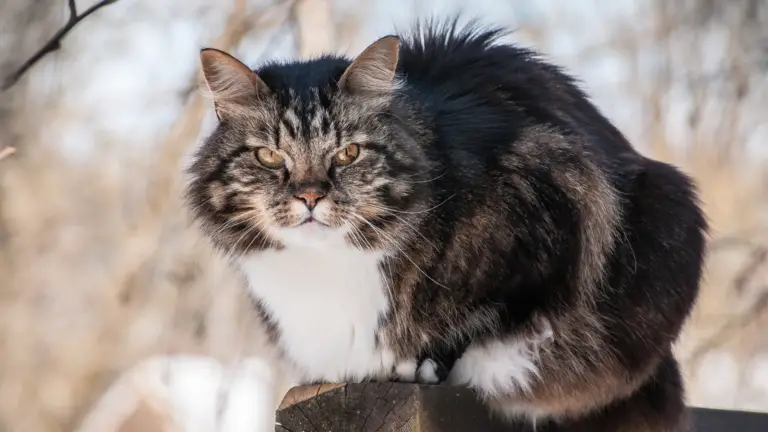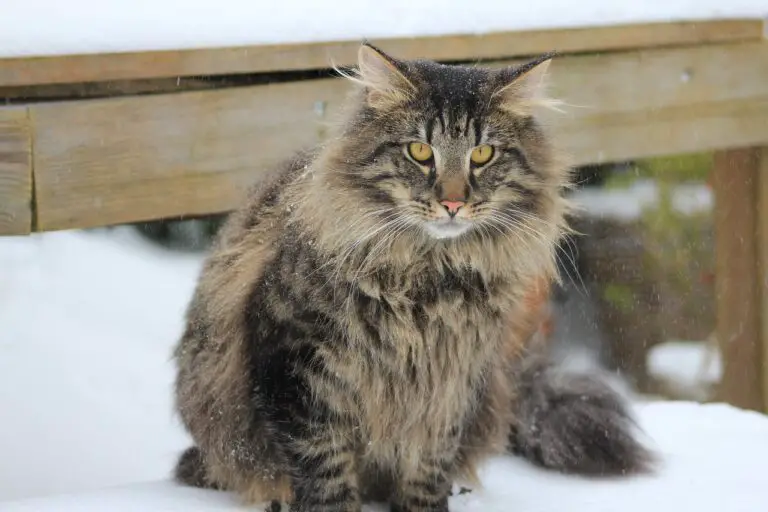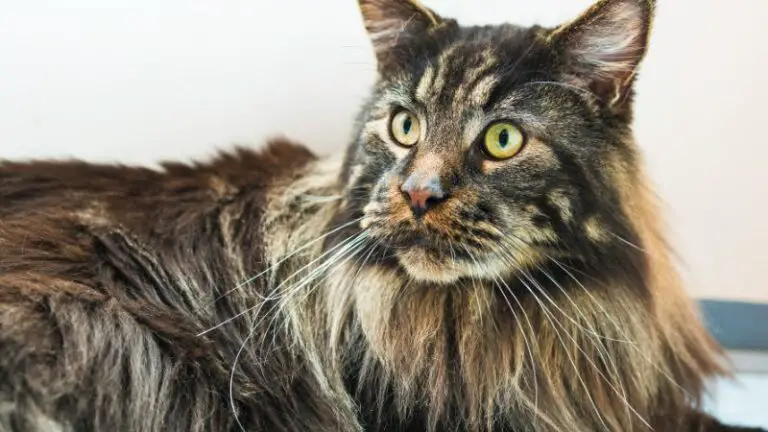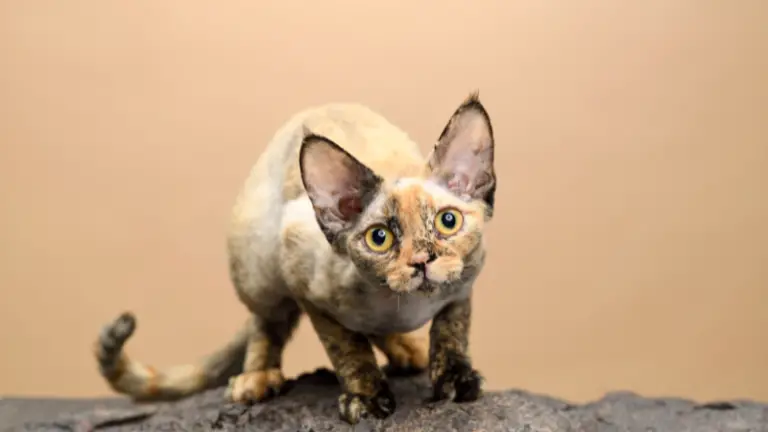TURKISH ANGORA CAT’S PERSONALITY AND GUIDE
Are you curious to know what is the Turkish Angora cat’s personality and temperament? The Turkish Angora is a cat breed with a 500 years history and is considered a national heritage in Turkey. Even the prophet Mohammad promised to keep a place in paradise for this cat, based on the current legend.
The Turkish Angora is a medium-big size cat with a weight ranging between 4 to 7 kg (9 to 15.5 pounds) with large and pointed ears and a small and triangular head. He has a short silky fur and a fluffy tail. He is affectionate, likes human companionship, curious, and wants to play.
Let’s see what makes this cat so unique and what are his personality traits.
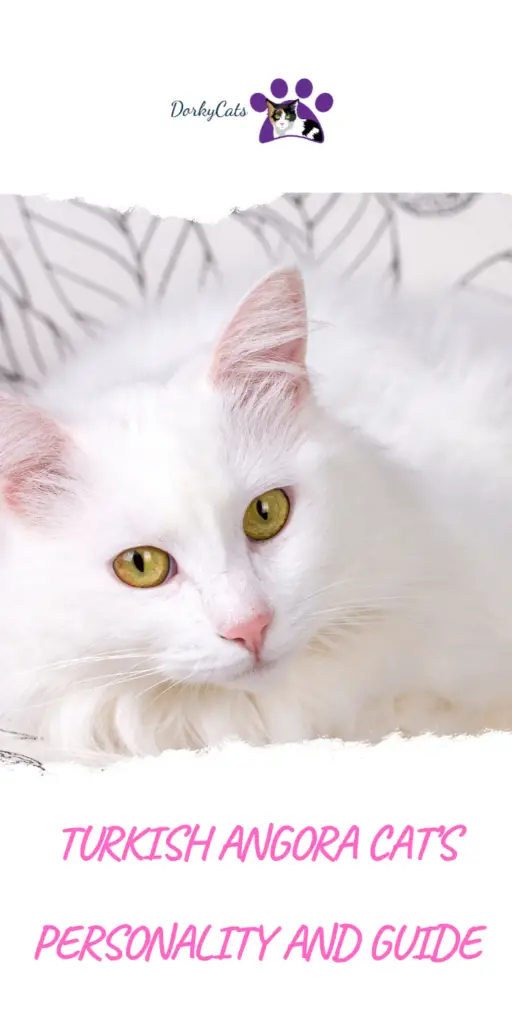
TURKISH ANGORA CAT – AN OVERVIEW
The Turkish Angora’ is a very social cat that is used to live with humans. He can be very affectionate, and love to go out exploring, even though he doesn’t like to go too far.
This cat is originally from central Turkey, in the region near Ankara, which was called earlier Angora, and from here his name: Turkish Angora.
This is an ancient cat breed. It is commonly believed that those cats are related to cats from ancient Egypt because they lived near Easter Anatolia (Asia Minor) for more than a thousand years. They were brought to that area by merchants who used to go back and forth.
The original color is white, while in the origin country cats that are affected from heterochromia ( which means that the two eyes have different colors, for example one blue and the other amber) are considered very valuable.
At the beginning of this century this cat breed was going toward extinction, but fortunately the Turkish capital zoo started a breeding program that is still ongoing today, saving this fantastic feline from disappearing forever.
TURKISH ANGORA CAT’S PERSONALITY TRAITS
Turkish Angora cat’s personality traits and characteristics:
| Characteristics | Peculiarities |
|---|---|
| Breed | Ancient breed different from the modern Angora |
| Personality | – Affectionate – Friendly with other pets -Sweet – Likes to roam moderately – Social – Curious – Playful – Patient with Kids – Talkative – Chatty – Athletic and energic – Love the outdoor but comfy inside – Can be a lap cat for a moment – He chooses “his human” to love – Doesn’t like to be alone |
| Look | Medium big size with silky and soft fur Colors may vary from white to tabby colors |
If you want an affectionate cat that likes to be with you, this is for sure a good choice. Turkish Angora likes to select his human and show devotion and affection. He can have bursts of love toward you shown with sweet touches of his paws. This cat can’t leave without a human companion and doesn’t like to be left alone too much.
He is a perfect babysitter, patient and delicate with kids. He never gets tired of playing with them. He is a very athletic cat and likes outdoor adventure, even though he doesn’t mind indoor living. This cat is also curious, and you may find him busy trying to get into something.
When he combines his curiosity with his energetic approach to life, he can be getting into trouble and get into funny situations. Therefore, do not expect a cat that is going to sit around all day long, you have to put up with his curiosity and inquisitive behavior.
The other peculiarity of the Turkish Angora is the chattiness. He likes to talk to humans, and he can go for a long time answering and chatting away. Try to figure what he wants to tell you. It is uncommon to have a cat that wants to communicate so much. It can be a new bonding experience.
TURKISH ANGORA CAT’S PHYSICAL CHARACTERISTICS
Turkish Angora is known for his fluffy tail, silky soft coat, and eye color that can be different. White is the original color, even though now this cat can be found in many colors, such as black, blue smoke, silver tabby, brown tabby, blue tabby, red tabby, calico, tortie, blue-cream, and cream.
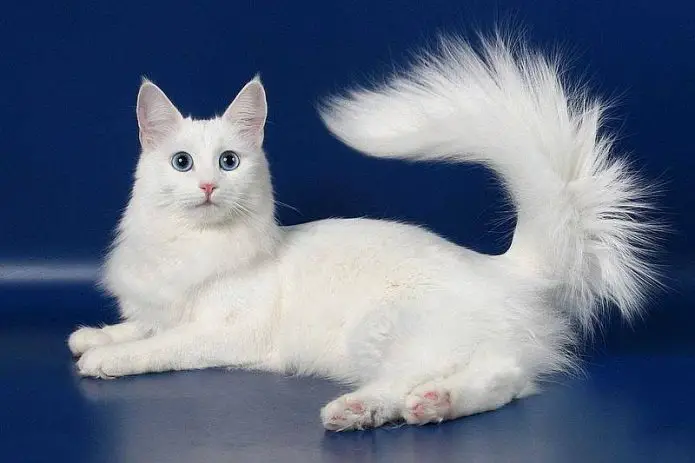
Here are the specification for this cat:
- Size: medium-big
- Ears: broad at the base and pointed
- Eyes: almond-shaped and of medium size, can be any color and even different colors
- Head: small, triangular, with a long nose, and no stop, straight profile
- Paws: long-limbed, with a thin but solid bone structure
- Fur: of medium length, fine and silky, without undercoat, the ruff is thick and marked
Turkish Angora requires a moderate help in maintaining his fur and in general is not a cat that require a lot of maintenance, beside playing and affection.
There are a few things to know:
- The length of the fur can change sensibly through the year
- The tail can have a very long fur, especially in winter
- In spring, his fur may require more attention
TURKISH ANGORA POTENTIAL HEALTH ISSUES AND CARE TIPS
Turkish Angora is famous for suffering from a few congenital disease:
- He can be deaf from one ear
- Hypertrophic cardiomyopathy – It is a cardiac condition usually found in cats between the ages of 2 to 6 years old
- Hereditary ataxia – It is genetic and affects kittens. They start shaking, and they do not survive when they get it
Typically, when a Turkis Angora has odd-colored eyes (one blue and the other amber or a different color ), the deaf ear on the same side of the blue eye.
CARE TIPS
Contrary to what you can imagine, the Turkish Angora is not a cat that needs constant care or maintenance to stay beautiful and healthy. The soft and silky fur requires brushing once a week, while in spring, when he may lose more fur, he needs brushing at least two times a week.
It is good to check his nose, ears, and claws from time to time to see if anything can be done to keep him healthy.
The diet for this cat is made from quality food. It is good to vary from time to time, including fresh food like chicken, rice, and vegetables—all of these need to be cooked with little to no dressing. The Turkish Angora can gain weight pretty fast, so you have to control the quantity and quality of the cat food.
The curious nature of the Turkish Angora needs to be satisfied with toys that can stimulate his mind and body. So provide cat trees, toys, and anything that can keep this cat active and entertained. Don’t forget to play with him, and chat with him.
THE HISTORY OF THE TURKISH ANGORA CAT
The Turkish Angora first arrived in Europe in the XVII century, brought by the humanist and roman Pietro Della Valle. Immediately, this cat conquered the heart of the Roman aristocracy. He became so famous that soon he was brought to the rest of Europe, starting with Paris.
He was brought to the U.S, and the first breeding farms came into existence in the ’60. In 1970 the breed was recognized, but only for those with white color. Only in 1978 were other colors recognized too.
A legend says that the queen of France, Maria Antonietta, loved those cats, and she owned several of them. She was very affectionate to them, and when the revolution started, she saved her cats by sending them to America by ship. The legend wants that those felines gave birth to the first Maine Coon.
HOW TO IDENTIFY A TURKISH ANGORA CAT
If you are not sure you have a Turkish Angora, there are a few characteristics that distinguish this cat from others:
- Pointed muzzle
- A long and bushy tail
- A slender build
Those characteristics are the ones that most typical of a Turkish Angora. Otherwise, this cat is elegant and has an aristocratic poise, with largely based ears pointed at the end. Eyes may be odd-colored or any other color.
TURKISH ANGORA CAT PRICE AND BREEDERS LIST
The price of a Turkish Angora can go from $600 to $3000, depending on how pure the breeding line is. It is more expensive to buy them from breeders than adopt them if you are lucky enough to find one at a shelter or another private person.
If you want to get a Turkish Angora from a breeder, remember to verify if the breeder belong to officiala recognized association, and inspect the cat’s living condition. Also verify if they are taken care by a competent vet.
Here is a list of trustable breeders where you can find a Turkish Angora:
- Chateaumanecat Turkish Angora – Member of the International Cat Association in Michigan U.S.
- Catnapper – Member of the International Cat Association in New York in the U.S.
- Eliteangoras – Member of the International Cat Association in Utah in the U.S.
- Sunbriar – Member of the International Cat Association in West Virginia in the U.S.
- Kadikedisi – Member of the International Cat Association in New Zeland
- Havvanurs – Member of the International Cat Association in the Netherlands
- Vonalrashiga – Member of the International Cat Association in Germany
FREQUENTLY ASKED QUESTIONS
Here are some frequently asked questions and answers:
Are Turkish Angora Cats Hypoallergenic?
Although they are fabulous cats, they are not hypoallergenic. This cat breed still produces the protein allergen Fel D1, which can be found in the fur and dander. If you need to find a cat breed hypoallergenic, you can’t have a Turkish Angora.
Are Turkish Angoras vocal?
Turkish Angora likes to talk and chat with their humans. They can engage in a long conversation, trying to make their point across. They are communicative cats and are perfect for people who like to an intelligent companion.
Are Turkish Angora smart?
Turkish Angora is an intelligent cat who likes to explore and challenge themselves. They need to satisfy their curiosity, opening doors, looking into things, and even about you. They want to bond with a particular human that they chose carefully. The Turkish Angora needs a challenging environment and needs to stay active playing or exploring.
Are Turkish Angoras aggressive?
Turkish Angora is not an aggressive cat. He is a sweet and affectionate cat who likes to bond with humans, be very patient with kids, and is pet-friendly. It is a perfect cat for a family with kids and other pets.
Do Turkish Angoras shed a lot?
Turkish Angora she a lot during spring, but overall he is not a cat that shed a lot. He needs to brush once a week and in spring 2 or 3 times a week. He can maintain his fur pretty well without too much maintenance.
